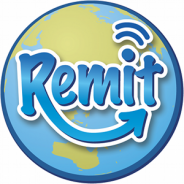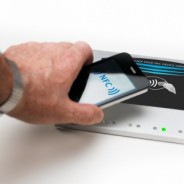The concept of stored value is a subject our company knows well – it’s our core business. Stored value is an important topic in the context of mobile payment, mobile money, and cross-border transfers such as international mobile remittance services. Mobile technology has enabled the creation of new services that challenge the definition of the most commonly known form of stored value system – money. This can create headaches for regulators, banks, and payment system operators and is making it difficult to classify and regulate some new payment models.
stored value systems
There are many definitions of what constitutes stored value. Stored value can be as simple as an IOU between two parties. Barter is a simple type of stored value although it is difficult to organise into a formal system for multiple participants.
The general definition says that stored value systems allow value (or assets) to be stored and retrieved over time.
Technically, any form of commodity or asset that has a perceived value and can be a store of value. Possessing a store of value is an underlying basis for any economic system, as some medium is necessary for a store of value in order for individuals to engage in the exchange of goods and services. As long as a currency is relatively stable in its value, money generally is the most common and efficient store of value found in an economy.
However, what is considered a store of value can be markedly different from one region of the world to another. In truth, any physical asset can be considered a store of value under the right circumstances, or when a base level of demand is believed to exist. For example, there are other types of stored value including property, precious metals, precious stones, shells, stocks, bonds, art, and even livestock. More recently stored value systems have included digital assets such as airtime (or mobile phone credit or top-up), mobile money and crypto currencies such as Bitcoin.
One factor that makes a stored value system perform is it’s liquidity or the ability to exchange the assets within it. For example it is far more practical to store value in the form of paper notes in a leather wallet or purse than to drive around with herd of livestock or carry a large bag of stones.
Mobile and digital stored value systems have created a whole new paradigm in value storage by enabling value to be exchanged instantly, conveniently and in some cases globally between participants.
the special kind of stored value – money
In most of the world’s advanced economies, the local currency can be counted on as a store of value in all but the worst case scenarios. For thousands of years, money has been the medium via which value-exchange has taken place. Controlled and regulated by rulers, empires and governments, on the whole, money as means of value-exchange has served society reasonably well – it works. Money is also a more practical means for governments to collect taxes.
Therefore when people talk of stored value, they traditionally refer to the economic definition in the context of a card payment product linked to a financial service – or money. But, there are others.
other forms of stored value
As a society we assign enormous significance to stored value in the form of money as the primary means of economic exchange. This is completely understandable as money is usually regulated in law, backed by governments and is what most of us receive as payment. But money is not the only form of stored value to enable economic exchange nor is it always the most efficient.
In some cases where physical cash circulation is problematic or inefficient, or where the banking system has failed enable commerce, technology has enabled the market to improvise and develop innovative solutions. In particular, mobile technology has introduced new forms of stored value, which is challenging regulators in many markets.
Examples of alternative forms of stored value are airtime, virtual money, and crypto currencies such as Bitcoin.
mobile airtime as stored value
Mobile phone airtime or prepaid credit or mobile top-up has long been a controversial but very practical form of stored value for payment. Not to be confused with mobile banking or mobile money which are clearly financial products and have strict regulatory controls, to the user, airtime looks and feels just like mobile money and can be transferred instantly and directly from a mobile phone. Certainly from a technical standpoint, for a mobile operator switching airtime between account holders is not that dissimilar to switching mobile money (infact airtime can be even more complex).
Mobile airtime is the most ubiquitous form of electronic stored value in the world. There are more people in the world with an airtime balance than a bank balance. Airtime is often more accessible than cash and works as a payment method because getting it (or acquiring it) in many markets is much easier than loading a mobile wallet with money via a bank branch or agent. In emerging markets, airtime is available from street vendors and can be traded, transferred, pooled and shared with family members.
Use of mobile airtime as an alternative to cash is commonplace in many emerging markets for the reasons described above. Street vendors in many markets accept payment for goods in airtime instead of cash. While this in most cases in not illegal, it can be problematic for governments and regulators who have oversight over the economic system.
Mobile airtime also provides an efficient means of payment for micro-payment transactions where traditional electronic payment methods are not available, inefficient, uneconomical, or even impossible. Despite the obvious simplicity and convenience of using airtime for micro-payment transactions, many regulators and also mobile operators still do not see the potential and importance of mobile airtime as a payment method.
However, some progress is being made with the implementation of direct carrier billing in some markets. This is partly in response to falling mobile network operator revenue but also due to the difficulty and failure of existing electronic payment methods to facilitate efficient in-app billing or other forms of micro-payment on a mobile device.
For an interesting perspective see the recent Mondato blog on this subject.
The award winning mHITs BuyPower mobile prepaid electricity vending platform uses mobile airtime as the payment currency with phenomenal success. Results in PNG prove that this model is so popular that over 60% of prepaid electricity vending transactions in the entire country are made using mobile airtime.
crypto currencies
Crypto currencies although not restricted to a mobile phone ecosystem, are overtly aimed at providing a global alternative to value exchange.
The disruptive nature of crypto currencies has been miss-interpreted in many cases as a threat to the existing financial system. There are many varying views on the role, potential and validity of crypto currencies. Regardless, crypto currencies appear to have a place in the modern economy and cannot be ignored. This post is not meant as a forum for debate on the merits of crypto currencies but for an interesting perspective on their importance see the recent Wired Magazine article on parallels with the Block Chain and the development of the TCP/IP protocol and growth of the development of the Internet.
Some countries are actively incorporating crypto currency technology into their financial systems.
What is clear is that crypto currency systems are becoming a viable alternative form of electronic stored value exchange for some applications. Crypto currencies provide an efficient means of value exchange that in some cases can be more efficient than current banking infrastructure – particularly for cross-border value transfers or micro-payment transactions.
Block Chain technology
The technology that drives crypto currencies – the Block Chain – provides a highly efficient means of value exchange that is public and transparent. The Block Chain is essentially a public ledger that holds the details of every single transfer between account holders in the network.
Crypto currencies use a decentralised network. Hence, every time a transaction occurs between the members of the network, it needs to be verified and validated to ensure that every transaction occurring within the network is between two individual accounts and that there is no risk of double spending.
The process of verification is carried out by members of the crypto currency network called miners. The miners use specialised and easily available software along with the processing power of their computers to verify the transactions.
Every few minutes a ‘block’ of all the transactions occurring over the crypto currency network is created by a miner. The miner creates a verified transaction file which holds a copied record of all the transactions that have occurred in the network over a defined period. The work of the miner is to assure all members of the network that each transaction is between 2 parties only and that there is no problem of double spending.
As each transaction in every block is made at a specific time, each block is linked to the previous block of transactions. By grouping blocks we get what is referred to as the Block Chain. And since this grouping of blocks occurs as per the protocol dictated by the algorithm underpinning the creation of the crypto currency, these protocols are defined as a Block Chain protocol.
For a more detailed frank and unbiased technical description of how Bitcoin and crypto currencies work see this video.
Regardless of issues surrounding regulation, volatility and identity, it is the true innovation of Block Chain technology that make crypto currencies a powerful electronic value exchange platform that can have a role in services including mobile money, mobile remittance and airtime top-up systems.
putting the value into a stored value system
All stored value systems face the challenge of putting asset value into the stored value system itself. Without sufficient total value in the system and a critical mass of participants, the stored value ecosystem cannot efficiently facilitate commerce and economic exchange.
Getting value in and/or out of the stored value system is a measure of liquidity of the system and a key factor in its success. This is easier for some systems such as mobile airtime as outlined earlier.
For financial products including payment cards, mobile banking and mobile money, value or money is loaded via the banking system or via an over-the-counter agent network. It could be argued that in the case of a financial product or money, it is the asset instrument for the stored value system that is being exchanged. For example when loading a mobile money wallet, paper notes are exchanged for an electronic equivalent to the same asset value – e-money. Conversely the opposite occurs when cashing out – electronic value is exchanged for paper notes. It is the paper notes which store the value in what we agree according to law as monetary value. This is an oversimplification and in practice the process is far more complicated and governed by legislation and regulation.
It is the exchange of one asset instrument for another between different stored value systems that can create complexity for regulators such as the exchange of money for airtime, the exchange of airtime for a product or service or the exchange of crypto currency for money. Perhaps it is not the fact that these exchanges can and are occurring, but the growth and popularity of these exchange systems that concern regulators.
mHITs recently launched a pilot service www.bitmoby.com which enables the exchange of Bitcoin for international mobile top-up. We built it to explore easy ways of transferring stored value from one system to another. Is this a money transfer service or a value exchange service?







Follow Us!